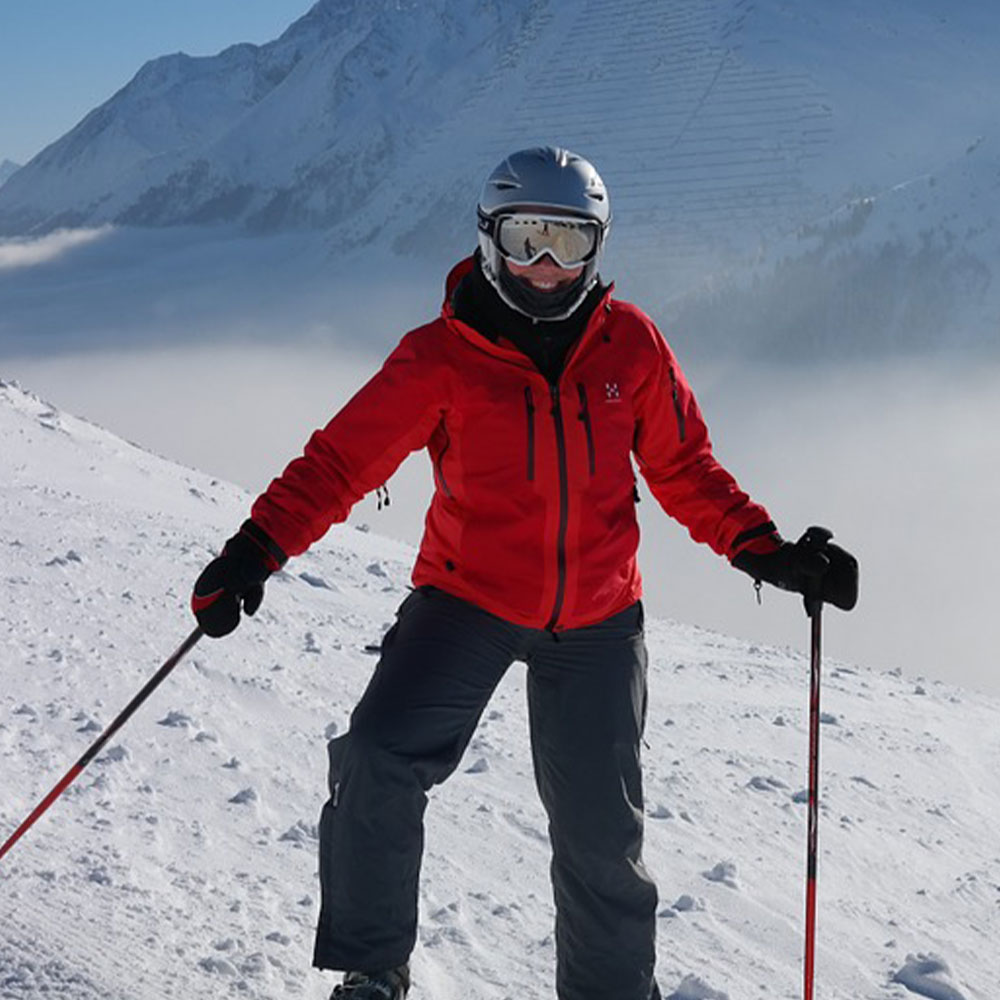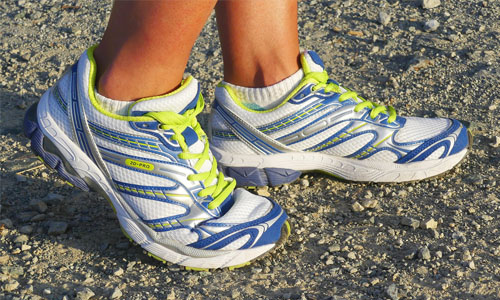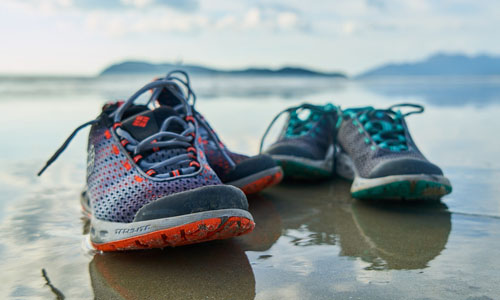Making Sure Your Running Shoes Are The Right Fit
Author

A keen runner, skier and nuts about cycling. Karl lives in Cumbria, where he loves encouraging his two children to follow in his outdoor lifestyle. Whilst out and about keeping active, Karl keeps a diary and shares it with Outdoor Look.
 When buying yourself a pair of running shoes, the most important consideration should be proper fit. A pair of running shoes may look uber stylish but if it doesn’t fit right it could end up hurting you. Although shoes come in all possible sizes and shapes, you can still have a hard time finding one that is perfect for you.
When buying yourself a pair of running shoes, the most important consideration should be proper fit. A pair of running shoes may look uber stylish but if it doesn’t fit right it could end up hurting you. Although shoes come in all possible sizes and shapes, you can still have a hard time finding one that is perfect for you.
Getting a good fit is not easy. Even with new and updated technologies being introduced, from arch support and gel technology, to good foot strike, the major concern is how well your feet fit. The design and visual appeal should not be the determining factor when you buy shoes. Shops and stores offer you a variety of choices when it comes to choosing the ideal pair of running shoes. However, one needs to sort out and narrow down their choices before trying them on. Here are a few tips that can help you choose a perfect pair of running shoes.
Material and Breathability
A professional would know that lightweight materials for sneakers and running shoes are ideal. You must reduce the impact of the force with which your body weight collides with the ground, as otherwise it can affect the muscles and have severe repercussions, that of sprained muscles and joints. Flexible shoes made of nylon and synthetic leather last longer.
Arch Support
The arch plays a major role in providing a good running experience. A comfortable and well-supported arch prevents the risk of facing musculoskeletal issues. However, the contour of the shoes that forms the shape of the foot may need modifications depending on the individual. High arches with good cushioning build up good inward arch strength, whereas a low arch with ‘motion control’ prevents inward rolling.
Heel Support
 Bad heel support can be a major reason for swollen and sore feet. Look out for shoes that prevents over-pronation in order to avoid the exacerbating effects. Hence, testing ankle support and heel counter is recommended. Sore heels might arise if you have flat feet and suffer from plantar fasciitis. Also, never go for a tight fit but always prefer a snug fit, especially at the midfoot and heel.
Bad heel support can be a major reason for swollen and sore feet. Look out for shoes that prevents over-pronation in order to avoid the exacerbating effects. Hence, testing ankle support and heel counter is recommended. Sore heels might arise if you have flat feet and suffer from plantar fasciitis. Also, never go for a tight fit but always prefer a snug fit, especially at the midfoot and heel.
Cushioning
Prevent running injuries by opting for shoes that have exceptional cushioning. Cushioning absorbs shocks to the muscles, joints, and spine. Midsole cushioning is mandatory if you are an athlete. This reduces heel, ankle, and toe stress when you have your shoes on for a longer duration. Proper cushioning can help you keep future knee, back, or hip injuries at bay.
Shoes Width
Avoiding blisters is not a difficult task. Look for shoes with better room in the toe area. A half size bigger is a fine thing to do. Also, a thumb width of space between your toe and the end of the shoe can improve your performance. A tingling sensation or numbness also implies that you are simply not wearing the right size. Never go for narrow shoes, especially when you have a high-volume foot. Cut down on blisters and bruised toes by choosing the right fit-shoes not too small or too big, not too loose or not too tight.
Going to a store that has a huge variety of shoes with a staff that is well-versed in the nuances of good running shoes can help you pick your dream pair. Being aware of the issues that you face is necessary. Orthotics can be helpful too. One last thing to keep in mind is that every brand might offer a different fit – so you must choose the one that is closest to your feet.
Author

A keen runner, skier and nuts about cycling. Karl lives in Cumbria, where he loves encouraging his two children to follow in his outdoor lifestyle. Whilst out and about keeping active, Karl keeps a diary and shares it with Outdoor Look.
Categories
- Sport (28)
- Product Reviews (3)
- Team Outdoor Look (7)
- Mike Wild (2)
- Mike Payton (2)
- Suse Hammond-Pears (3)
- Snowboarding (12)
- Latest Offers (105)
- Shop Talk (1)
- Competitions (7)
- Walking (413)
- Lifestyle Fashion (8)
- Travel (86)
- Kit Guides (176)
- Workwear Clothing (6)
- Safety Workwear (4)
- Health/Fitness (289)
- Skiing (91)
- Great Outdoors (1316)
- Cycling (92)
- January 2025
- December 2024
- November 2024
- October 2024
- September 2024
- August 2024
- July 2024
- June 2024
- May 2024
- April 2024
- March 2024
- February 2024
- January 2024
- December 2023
- November 2023
- October 2023
- September 2023
- August 2023
- July 2023
- June 2023
- May 2023
- April 2023
- March 2023
- February 2023
- January 2023
- December 2022
- November 2022
- October 2022
- September 2022
- August 2022
- July 2022
- June 2022
- May 2022
- April 2022
- March 2022
- February 2022
- January 2022
- December 2021
- November 2021
- October 2021
- September 2021
- August 2021
- July 2021
- June 2021
- May 2021
- April 2021
- March 2021
- February 2021
- January 2021
- December 2020
- November 2020
- October 2020
- September 2020
- August 2020
- July 2020
- June 2020
- May 2020
- April 2020
- March 2020
- February 2020
- January 2020
- December 2019
- November 2019
- October 2019
- September 2019
- August 2019
- July 2019
- June 2019
- May 2019
- April 2019
- March 2019
- February 2019
- January 2019
- December 2018
- November 2018
- October 2018
- September 2018
- August 2018
- July 2018
- June 2018
- May 2018
- April 2018
- March 2018
- February 2018
- January 2018
- December 2017
- November 2017
- October 2017
- September 2017
- August 2017
- July 2017
- June 2017
- May 2017
- April 2017
- March 2017
- February 2017
- January 2017
- December 2016
- November 2016
- October 2016
- September 2016
- August 2016
- July 2016
- June 2016
- May 2016
- April 2016
- March 2016
- February 2016
- January 2016
- December 2015
- November 2015
- October 2015
- September 2015
- August 2015
- July 2015
- June 2015
- May 2015
- April 2015
- March 2015
- February 2015
- January 2015
- December 2014
- November 2014
- October 2014
- September 2014
- August 2014
- July 2014
- June 2014
- May 2014
- April 2014
- March 2014
- February 2014
- January 2014
- December 2013
- November 2013
- October 2013
- September 2013
- August 2013
- July 2013
- June 2013
- May 2013
- April 2013
- March 2013
- February 2013
- January 2013
- December 2012
- November 2012
- October 2012
- September 2012
- August 2012
- July 2012
- June 2012
- May 2012
- April 2012
- March 2012
- February 2012
- January 2012
- December 2011
- November 2011
- October 2011
- September 2011
- August 2011
- May 2010
- April 2010
- March 2010
- February 2010
- January 2010
- November 2009
- October 2009
- September 2009
Submit a Comment